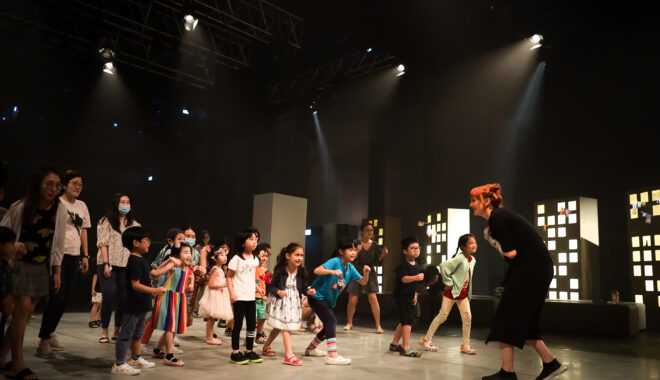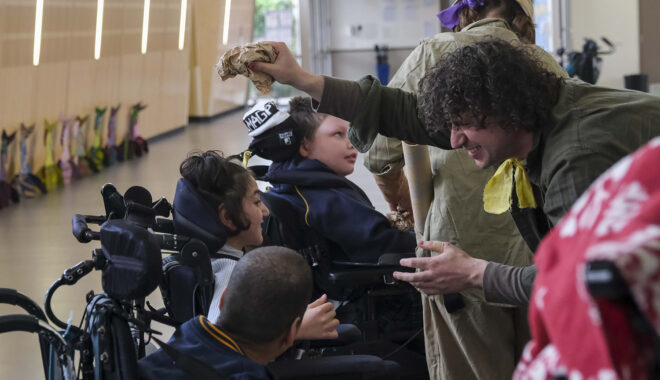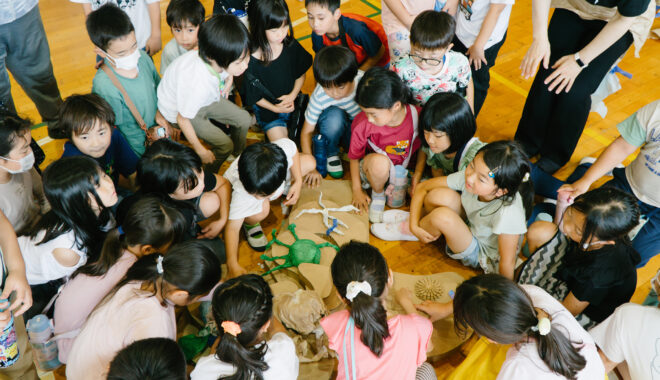29 Oct 2018 Education News
“The environments that Polyglot creates are venues for instant collaboration”
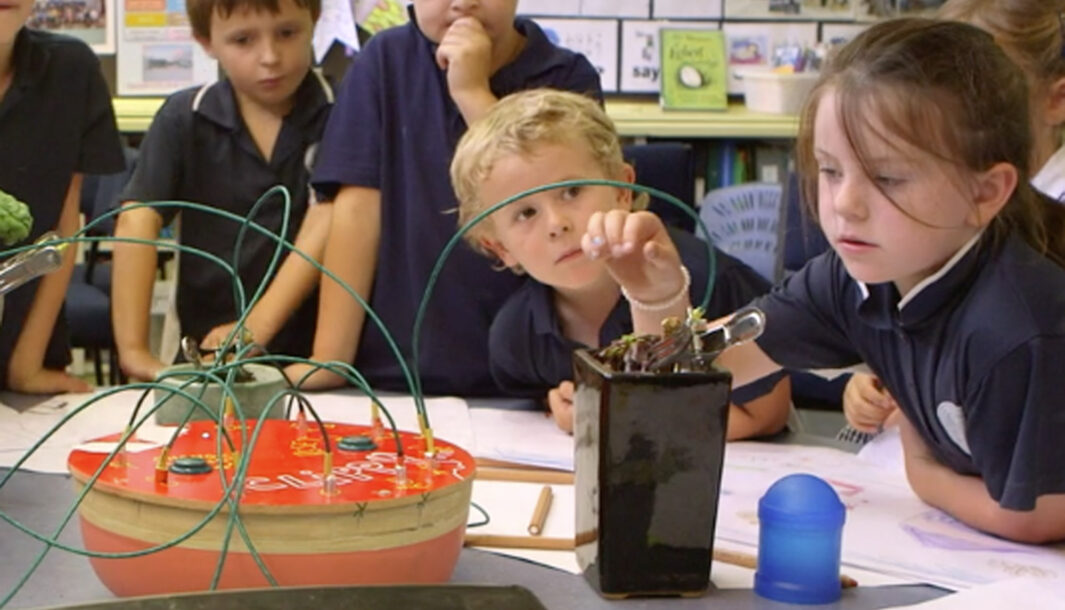
By Glen Walton
“Would a wet shoe make a good instrument?” a student asks me in the middle of a workshop. “Umm, sure, yeah I think that would work.” I say with very little evidence/confidence. The next day, sure enough he plonked a wet sneaker on the school table to the laughs of other students and the face scrunch of the attending teacher. He grabbed an oversized clip attached to Clippy V1.0, a salad bowl shaped device (because it’s made from a salad bowl!) that turns conductive materials into triggers for music and sound. The clip was on, I turned up the volume and stood back…
“BWAAARK!” With the touch of a fingertip the wet shoe was triggering the sound of a maniacal chicken. “We’re going to need more shoes!” the teacher chuckled.
I have been working on devices for collaborative music making for about three years, after what seems like another life as a theatre maker/performer and a musician in a novelty tropical party band. I’ve been creating work collaboratively in that time and have come to view it as my preferred way of developing pretty much anything.
When I started working with Polyglot Theatre over eight years ago, I had no idea what I was getting myself into. What is this? Kids make everything? What about me? I’m the Artist here! I don’t think I understood the creative conversation that was happening as children made cities of boxes or tangled me up in a web of elastic. Over time I started to catch on: the environments that Polyglot creates are venues for instant collaboration. These environments don’t just make themselves though, it’s collaboration and co-creation all the way down, from the kernel of an idea to an internationally touring work.
I was sent on my current path of creating devices for musical collaboration when I was responsible for creating a live soundtrack for Polyglot’s Paper Planet. I set up a bunch of gear and tried my best to create sounds that I thought ‘represented the play’ in the cardboard forest. After a few tries, I realised that I needed some help! I wired up some copper leaves all around my sound desk, so that when participants touched an ‘activator’ and a leaf, they would trigger musical notes that mixed in with what I was playing. One day a child worked out that you could get another person to touch the ‘activator’ and if you touched a leaf when the two people connected they could trigger music through their hands, or ears or noses!
That discovery sent me off using technology to develop instruments out of real plants, paint, and people. I even ended up doing a Masters Degree at the University of Technology Sydney studying interactive collaborative music-making in public spaces.
Making music collaboratively is one thing, but actually designing the device collaboratively is the goal of Clippy, a new workshop series created with Polyglot and Playable Streets. Clippy V1.0 was developed with the students of Lismore Primary School (the wet shoe school), their input lead to Clippy V1.1 and so on. The instrument will continue to develop through this process of co-design with children. I have no idea what it will look like in 5 years!
The ‘maker’ technology revolution makes this sort of iterative digital co-design possible. A small computer can be purchased for as little as $15 and used to build a light display, a musical instrument or even a robot!
When it comes to designing technology with children, Allison Druin of the University of Maryland has done a series of interesting studies. She identifies four roles that children may take on in a co-design process, these include child as: user, tester, informant, design partner. Druin suggests that the latter allows for the most interesting outcomes. Through her research she has shown that we all bring our specific skills to a project no matter our background, occupation or age.
Mark Twain said “There is no such thing as a new idea. We simply take a lot of old ideas and put them into a sort of mental Kaleidoscope.” When we mix our kaleidoscopes together we get exponential diversity in creation. Also, there is an energy that comes from the collaborative process that is both exciting and challenging. It is easy to get trapped into ‘circular thinking’, where one solution seems possible/ logical/ right. Sometimes all it takes to put these ideas on a new course is a primary school student with a wet shoe.
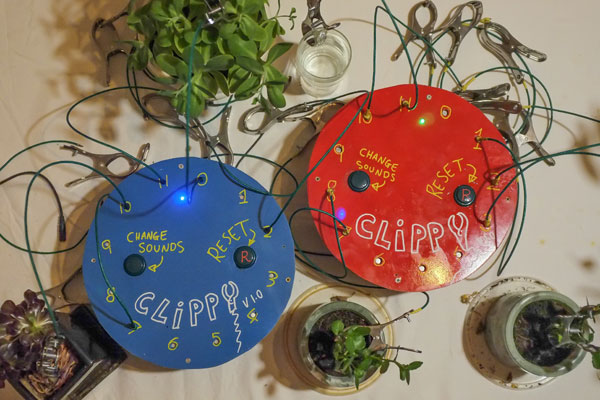
Further reading
Drake Music develops individualised instruments with people with disabilities: http://www.drakemusic.org/
University of Maryland Human-Computer Interaction Lab – Kidsteam: Children and Adults Working as Design Partners: http://hcil.umd.edu/children-as-design-partners/
Make Magazine – originators of the international ‘Maker Faire’: https://makezine.com/
Biography
Glen Walton is one of Australia’s leading artists exploring cutting edge and genre defying performance, interaction and community engagement. Glen is a performer, writer, theatre maker, visual artist, musician, interaction designer and digital instrument maker, he has developed a distinctive style in both theatrical and musical creations.
Glen is the founder and artistic director of interactive digital arts company Playable Streets. The mission of Playable Streets is to create interactive musical play spaces that encourage strangers to become musical collaborators.
He is also a founding member of The Suitcase Royale Theatre Company, whose unique blend of music and ‘Australian Gothic’ narratives has accrued much critical acclaim worldwide. He has toured extensively throughout Australia, North America, Asia, Europe and the United Kingdom, including Melbourne International Arts Festival, Edinburgh Festival and Soho Theatre (United Kingdom), Ruhrfestspeile and Erlangen Festivals (Germany), the Andy Warhol Museum (Pittsburgh), and the New Victory Theatre (New York).
Since 2010 Glen has worked with Polyglot Theatre as a performer, musician, puppet maker and collaborator, touring nationally and internationally.
Glen recently completed a Masters degree at the University of Technology, Sydney (part of the Creativity and Cognition Studios) studying interactive touch-based musical installations.
Playable Streets website: www.playablestreets.com
Playable Streets Instagram: https://www.instagram.com/playablestreets/
Playable Streets Facebook: https://www.facebook.com/playablestreets/



